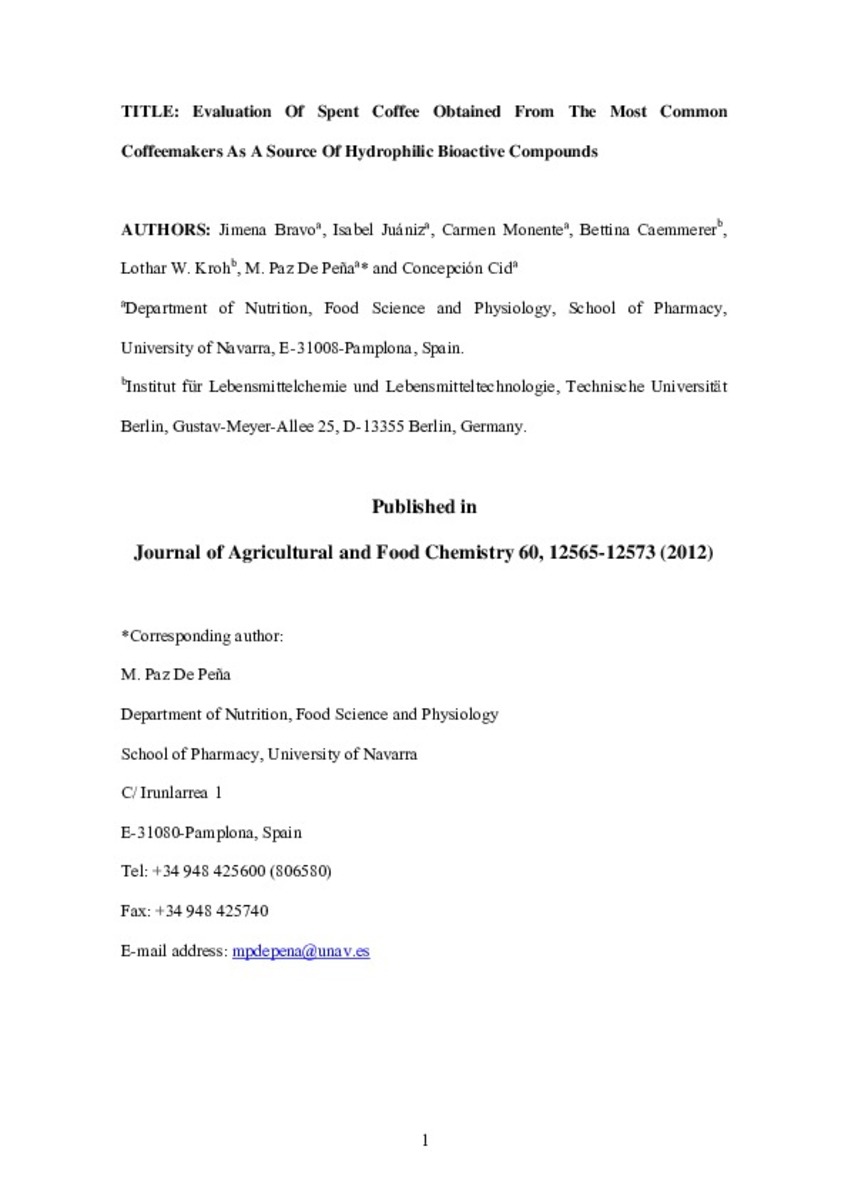Evaluation of spent coffee obtained from the most common coffeemakers as a source of hydrophilic bioactive compounds
Keywords:
Coffee
Spent Coffee
By-products
Bioactive compounds
Chlorogenic acids
Antioxidant
Citation:
Bravo J, Juaniz I, Monente C, Caemmerer B, Kroh LW, Paz De Peña M, et al. Evaluation of spent coffee obtained from the most common Coffeemakers as a source of hydrophilic bioactive compounds. J Agric Food Chem 2012 DEC 26;60(51):12565-12573
Statistics and impact
0 citas en

0 citas en

Items in Dadun are protected by copyright, with all rights reserved, unless otherwise indicated.







